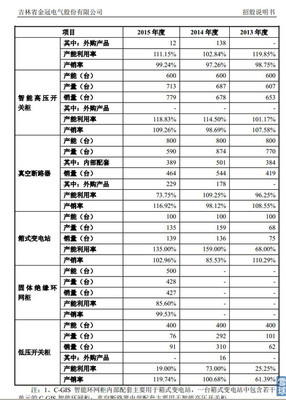统计该数据时,涵盖的范围包括制造业、矿业、公用事业、耐久

当产能利用率超过95%以上,代表设备使用率接近全部,通货膨胀的压力将随产能无法应付而急速升高,在市场预期利率可能升高情况下,对一国货币是利多。反之如果产能利用率在90%以下,且持续下降,表示设备闲置过多,经济有衰退的现象,在市场预期利率可能降低情况下,对该国货币是利空。市场一般最为重视美国的产能利用数据。
在美国,一般每月中旬公布前一个月的数据。
Capacity utilization is a concept in economics whichrefers to the extent to which an enterprise or a nation actuallyuses its installed productive capacity. Thus, it refers to therelationship between actual output that 'is' producedwith the installed equipment and the potential output which'could' be produced with it, if capacity was fully used.
Contents[hide] |
[edit]Economic significance
If market demand grows, capacity utilization will rise. Ifdemand weakens, capacity utilization will slacken. Economists andbankers often watch capacity utilization indicators for signs ofinflation pressures.
It is believed when utilization rises above somewhere between82% and 85%, price inflation will increase. Excess capacity meansthat insufficient demand exists to warrant expansion of output.
All else constant, the lower capacity utilization falls(relative to the trend capacity utilization rate), the better thebond market likesit. Bondholders view strong capacity utilization (above the trendrate) as a leading indicator of higher inflation. Higher inflation(or the expectation of higher inflation) decreases bond prices(producing a higher yield to compensate for the higher expectedrate of inflation).
Implicitly the capacity utilization rate is also an indicator ofhow efficiently the factors ofproduction are being used. Much statistical and anecdotalevidence shows many industries in the developed capitalisteconomies suffer from chronic excess capacity. Critics ofmarket capitalism thereforeargue the system is not as efficient as it may seem, since at least1/5 more output could be produced and sold, if buying power wasbetter distributed. However, a level of utilization somewhat belowthe maximum prevails, regardless of economic conditions.
[edit]Measurement
In economic statistics, capacity utilization is normallysurveyed for goods-producing industries at plant level. The resultsare presented as an average percentage rate by industry andeconomy-wide, where 100% denotes full capacity. This rate is alsosometimes called the "operating rate". If the operating rate ishigh, this is called "overcapacity", while if the operating rate islow, a situation of "excess capacity" or "surplus capacity" exists.The observed rates are often turned into indexes.
There has been some debate among economists about the validityof statistical measures of capacity utilization, because muchdepends on the survey questions asked, and on the valuationprinciples used to measure output. Also, the efficiency ofproduction may change over time, due to new technologies.
For example, MichaelPerelman has argued the US FederalReserve Board measure is just not very revealing. Prior to theearly 1980s, he argues, American business carried a great deal ofextra capacity. Running close to 80% indicated at the timeapproaching capacity restraints. Since that time, firms havescrapped much of their most inefficient capacity. As a result, an77% capacity utilization now would be equivalent to a historicallevel of 70%.
[edit]Engineering andeconomic measures
One of the most used definitions of the "capacity utilizationrate" is the ratio of actual output to the potential output. Butpotential output can be defined in at least two different ways.
One is the "engineering" or "technical" definition, according towhich potential output represents the maximum amount of output thatcan be produced in the short-run with the existent stock ofcapital. Thus, a standard definition of capacity utilization is the(weighted) average of the ratio between the actual output of firmsto the maximum that could be produced per unit of time, withexisting plant and equipment (see Johanson 1968). Obviously,"output" could be measured in physical units or in market values,but normally it is measured in market values.
However, as output increases and well before the absolutephysical limit of production is reached, most firms might wellexperience an increase in the average cost of production (even ifthere is no change in the level of plant &equipment used). For example, higher average costs can arise,because of the need to operate extra shifts, undertake additionalplant maintenance, and so on.
An alternative approach, sometimes called the "economic"utilization rate, is therefore to measure the ratio of actualoutput to the level of output, beyond which the average cost ofproduction begins to rise. In this case, surveyed firms areasked by how much it would be practicable for them to raiseproduction from existing plant and equipment, without raisingunit costs (see Berndt & Morrison 1981).Typically, this measure will yield a rate around 10 percentagepoints higher than the "engineering" measure, but time series showthe same movement over time.
[edit]Output gap measure
As a derivative indicator, the "output gap percentage" (%OG) canbe measured as actual output (AO) less potential output (PO)divided by potential output x 100.
%OG= (AO-PO)/PO x 100
[edit]FRB and ISMutilization indexes
In the survey of plant capacity used by the US FederalReserve Board for the FRB capacity utilization index, firms areasked about "the maximum level of production that thisestablishment could reasonably expect to attain under normal andrealistic operating conditions, fully utilizing the machinery andequipment in place."
By contrast, the Instituteof supply management (ISM) index asks respondents to measuretheir current output relative to "normal capacity", and this yieldsa utilisation rate which is between 4 and 10 percentage pointshigher than the FRB measure. Again, the time series show more orless the same historical movement.
[edit]Data
The average economy-wide capacity utilization rate in the USsince 1967 was about 81.6% according to the Federal Reservemeasure. The figure for Europe is not much different, for Japanonly slightly higher.
The average utilization rate of installed productive capacity inindustry, in some major areas of the world, was estimated in2003/2004 to be as follows (rounded figures):
 爱华网
爱华网



